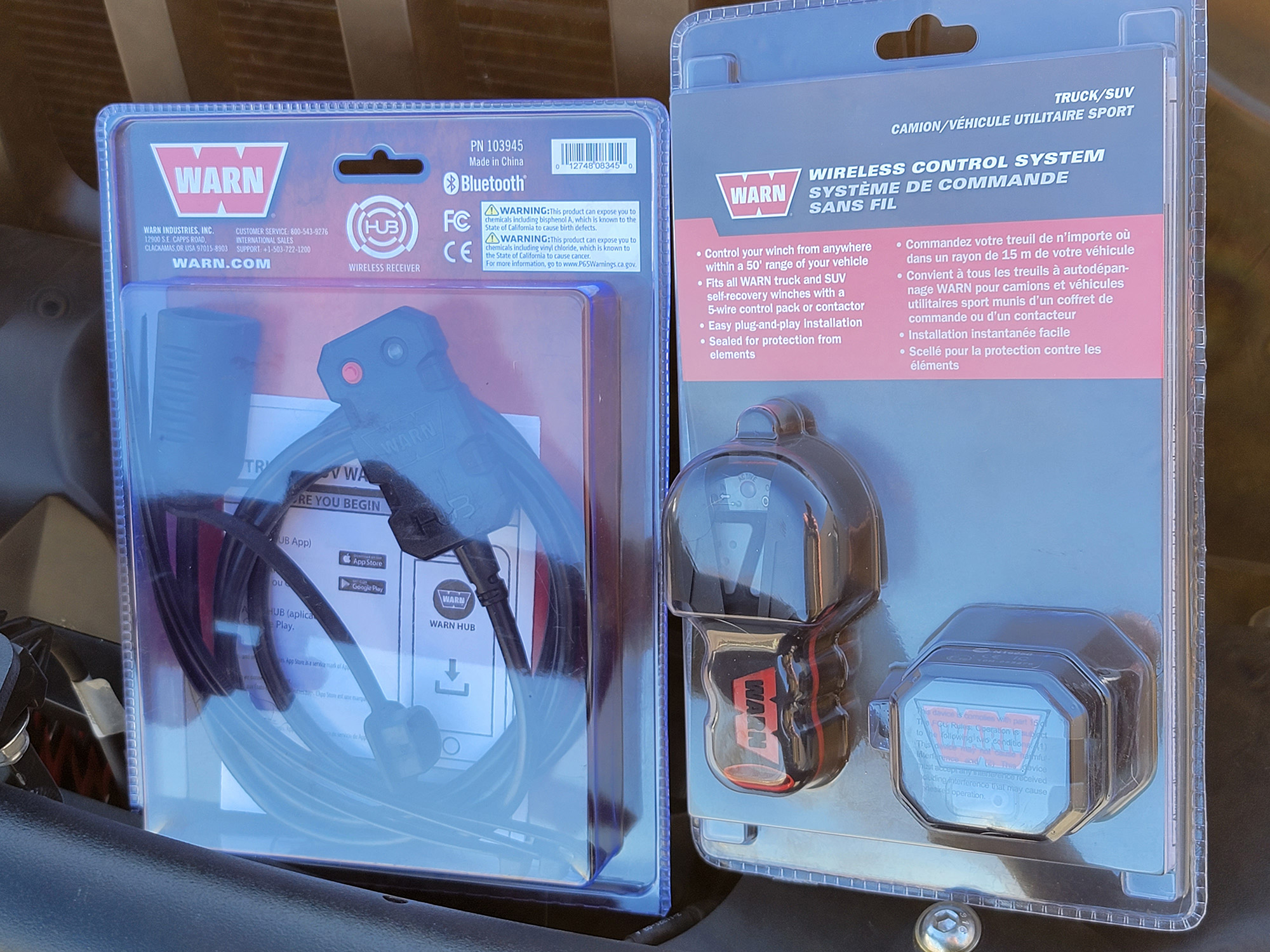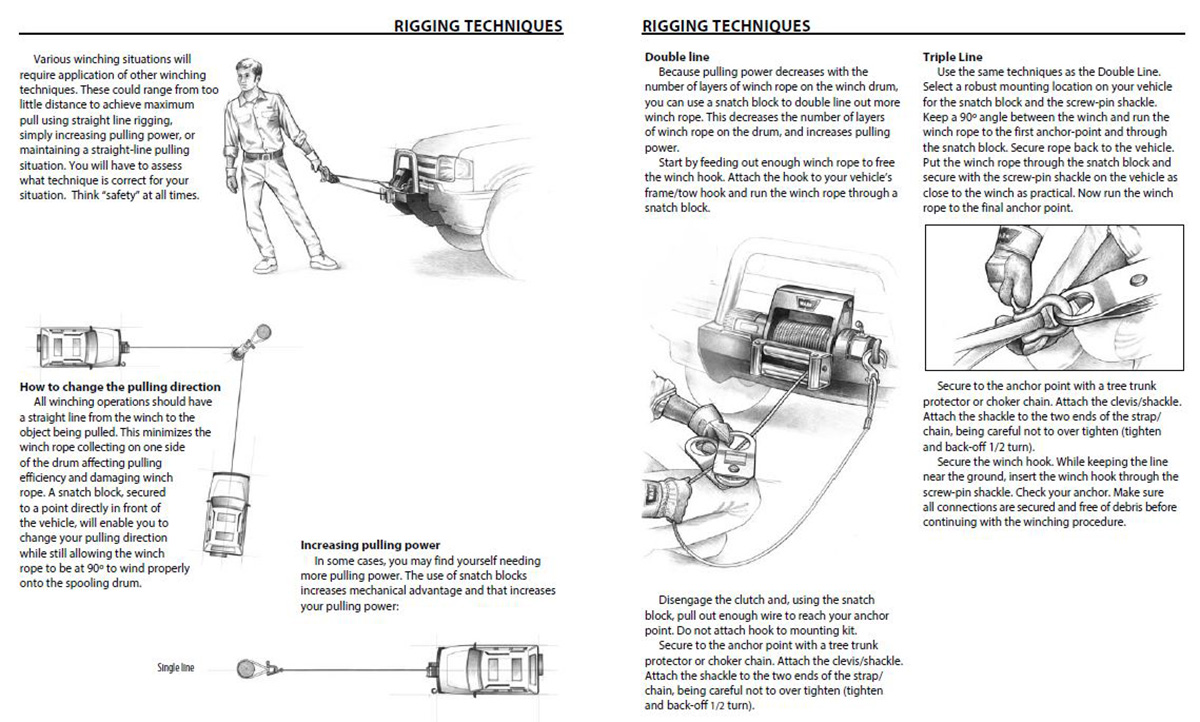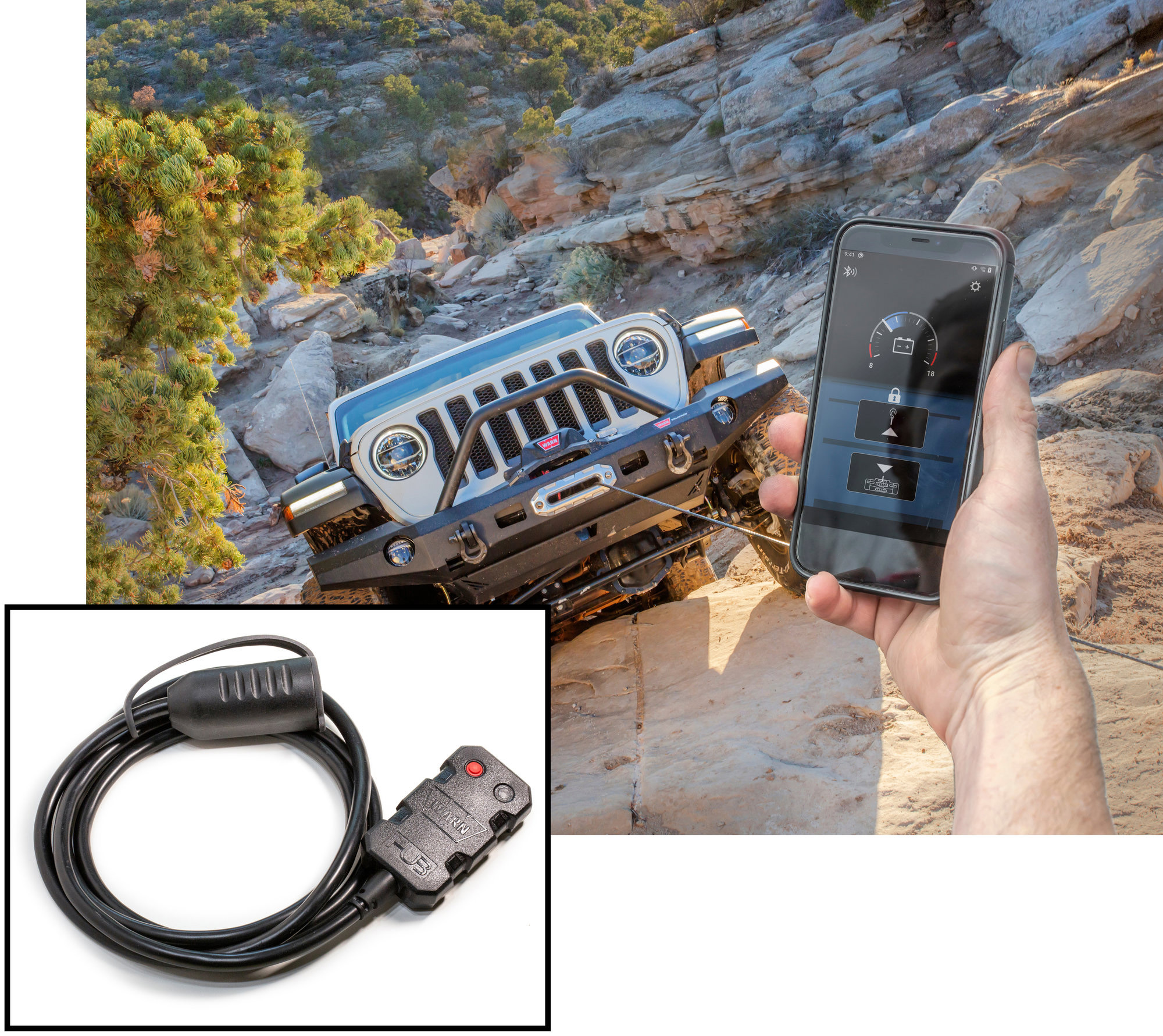by Scott Ammerman
Torque Correspondent
Warn’s new Zeon 10 winch on Project Rattler (my 2013 Wrangler Rubicon) is perfect for my needs in almost every way, but it utilizes a wired remote that sometimes can be restricting. The Zeon Platinum models, however, come with an advanced remote plus a wirelessly activated clutch, as well as a faster line speed — but this feature package does up the cost over the standard Zeon version.
While there is certainly nothing wrong with plugging in a wired remote, running the wire along your hood to the driver seat, and in the door or open window, can be a hassle during inclement weather. It can also be challenging if you are on uneven or muddy terrain because many of us do not hook up that remote until we actually really need to use the thing. Sometimes the person in the driver’s seat isn’t even the one hooking up the remote, especially if they end up in a spot where they can’t exit the vehicle easily (or safely).

Since it is not always convenient to run your winch remote wire up front to the winch, and then through your driver side door for self-recovery use, Warn has come up with two options to add wireless capability to its compatible winches.

Option one is the Warn Wireless Remote Control System for Jeep, Truck, & SUV Winches that has been out for quite a while. This system uses a receiver that attaches to your winch remote port with a lanyard and carabiner to secure. This system will work with ANY Warn winch with a standard five-wire remote, aside from the newly released EVO models (these come standard with a wired/wireless remote anyway).
This means if you upgrade your winch in the future (or have multiple vehicles with Warn winches) you can use this remote interchangeably.

Included in the package are the remote control, receiver, a mounting bracket with rotating base (more on that soon) and a ground wire that is required for some specific winch models — mine was not one of those.

Instructions for installation are included if your winch requires this additional wire.
Also included is a 21 page Basic Guide To Winching Techniques — while this is by no means a comprehensive guide to vehicle recovery, it is a good thing to know for someone new to the practice.

The system is plug-and-play, and sets up quickly.

Just pull off the dust cover and pop it in the standard “D plug” remote port.

Use the lanyard around the dust cover retention strap on the winch contactor housing to add extra security should it become dislodged.

Simply hold both buttons on the remote until the green “active” light comes on, and the winch is ready to use. The remote will power off to conserve its battery after three minutes of inactivity, so it doesn’t end up depleting its charge if you forget about powering down after using.
There is a pairing button on the receiver, but this is only used if you have to get a replacement remote. These are available separately from Warn if your original is lost or destroyed. The system comes paired from the factory and ready to go, and you don’t have to hit this button every time you use the remote.
While this control looks similar in shape to the Advanced Wireless Remote that comes with the Zeon Platinum, it is substantially different. The size is the most obvious difference, but the Platinum remote also allows clutch control as well as other information on its LCD display — including battery voltage.

One of the bigger advantages I’ve noticed over using a wired remote, in addition to the obvious decrease in time required to set up, is the unit takes up a lot less space.
If you are more than likely to need your winch over the course of a day, simply plug the receiver into the winch. If you need it, you can then power up the remote and be ready to go in seconds, rather than having a remote cable dangling off in space where it may catch itself on tree branches or moving parts on the vehicle.

Using the supplied bracket, I mounted my winch remote under the steering column so I have it ready whenever it's needed. This bracket can be rotated to eight different positions for ease of mounting, and can be clamped onto a one-inch tube or mounted to any flat surface.

I store my receiver in a zippered bag (not included, just something I had) under the driver’s seat that I can reach with my seat belt on — so in the event I end up stuck, and someone else has to set my rigging (like if the driver’s door is blocked), the receiver can be installed in seconds with only minor instruction.

In a situation where it is safer for your spotter to operate the remote, it can be used up to 50 feet from the receiver.

Photo Credit: Neil Berger
Additionally, if it could get lost in a pocket or fall in a place where retrieval could be a problem, something like a lanyard helps. I grabbed one from my favorite Jeep parts supplier to carry around my neck.

Next time you use your winch on the trail, pay attention to how long it takes you to get that remote out, uncoiling the cable, plugging it in, securing it so it can be safely used and stowing it back where you keep the thing. As I said, there is nothing wrong with doing it this way, it is certainly the cheaper option, but if you rely on your winch frequently then this saved time certainly adds up.
Your entire recovery situation will end up taking less time, thus allowing you to get back on the trail in a fraction of the time.
The remote’s LED also acts as a low battery indicator — if it flashes red while in use, the batteries are low and should be replaced. The pair of 12-volt, type 23 alkaline batteries the remote uses aren’t super easy to find in a pinch, but they do last a long time. I bought an extra set to keep with my small spare parts in the event I need them away from home.
That said, I keep my wired remote in the vehicle as a backup, because that’s just good business.
All three components in the system — holster, remote and receiver — are available separately through Warn in the event a spare is required. Additionally, an unexpected advantage we’ve found is the ability to easily use it on a friend’s vehicle if their remote is inaccessible or not functioning correctly, or where setting up theirs would take time you’d rather not use setting up a wired remote.

Warn’s second option is the Warn HUB Wireless Receiver - Smart Phone Enabled Winch Controller.
Unlike the Wireless Remote Control System receiver, the HUB wireless receiver is designed to be secured and left in the engine compartment or behind the bumper of your Jeep when not being used. The six-foot cable and receiver can be secured to anything you can wrap the included zip ties around, out of the way of heat sources and moving parts. It is IP68 and IP69K waterproof rated, and features ruggedized electronics so it will stand up well to this environment.

Its main advantage is the lack of a remote, as it uses an app and your smartphone’s Bluetooth to control the winch functions in place of the battery powered remote of the WRCS. This allows the possible range to stretch “up to 100 feet” which depends a lot on the strength of your phone’s Bluetooth radio. To use the HUB system, you plug the cable end into your D-remote port and open up the app. In seconds your phone will connect to the receiver if you have previously paired it — just like any other Bluetooth device.
This allows the total investment cost to be about half of the other wireless option detailed above. Apps are available for iPhone and Android devices.
Now, a comparative analysis of the two systems:
Advantages of the HUB system over the Wireless Remote Control System:
- About half the cost.
- Available for Warn winches, as well as some other brands. An additional variant is made that works with Smittybilt and other brands.
- Less parts to worry about losing or forgetting.
- It stays attached to the vehicle.
- Longer range. Up to 100 feet depending on your controlling device.
- Expensive smartphone versus standalone remote
- Taking a phone into unforgiving environments is always a risk
- The (comparatively) inexpensive remote is replaceable
- If your spotter needs to use the remote, you don’t have to hand them your phone
- Can be used on multiple vehicles
- Same device can be quickly used with any five wire Warn winch
- Quick hookup is easy for people unfamiliar with the system
- The HUB cable would be hidden inside your grill, might not be easy to find if muddy or dark
- The receiver for the WRCS is stored in the vehicle when not in use
- Does not rely on your phone’s battery or Bluetooth
- If your phone is dead, or there is a screen freeze, it could delay recovery
- Phones can usually only be connected to one or two devices
The newer HUB system certainly has a lot of advantages, but I did end up choosing the Wireless Remote Control System instead. Your needs may vary, but I had several reasons why the remote was a better option for me.
Advantages of the Wireless Remote Control System over the HUB system:
Again, both options are very well thought out and useful. I hope Warn will continue to offer both options for a while, as they both have distinct advantages depending on how you use them.





















